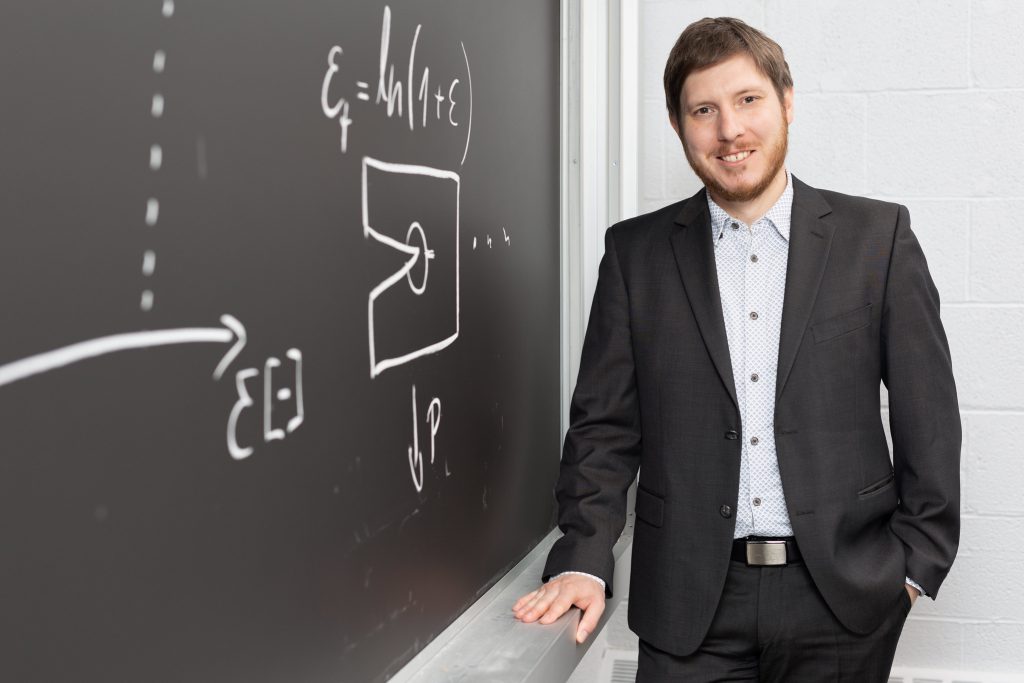Why were the Wright Brothers linearly independent vectors?
Because two of them made a plane!

Linear algebra is a field of math that is used throughout engineering and science. In fact, the first step in solving many engineering problems is to make it a linear algebra problem. It’s no surprise that most engineering and science programs teach linear algebra early on.
MAT185 is loosely a continuation of ESC103. It teaches linear algebra from a first principles, ground-up approach. You’ll learn the reasoning behind mathematical ideas and rigorously prove that they’re true. You’ll cover some concepts that were introduced in ESC103, such as vectors, matrices, and differential equations, and new concepts including fields, vector spaces, bases, coordinates, linear transformations, and eigenproblems.
However, unlike ESC103, there is little computation in this course. This is a proof-based course, so you’ll be tested on your ability to connect concepts and use linear algebra principles to prove and disprove general statements. MAT185 is taught as if you’ve never taken a proof-based course before, so don’t worry if you’re new to this: it’s time to learn! You’ll be taught methods like proof by contradiction, proof by induction, proof of contrapositive, proof of equal sets, and proof of if and only if statements. Students have varying experiences with this course. Some find it reasonable while others find it very difficult. There is little correlation between how you felt about ESC103 and how you will feel about MAT185. Although they both cover some pure math and linear algebra, the questions you’re asked, the perspective from which you learn, and what you’re expected to understand are completely different.
Professors

Professor Philipp Seiler
Professor Seiler completed his bachelor’s and master’s degrees in Mechanical Engineering and Mechatronics at TU Braunschweig, Germany, where he also earned his PhD in Materials Science. He held research positions at Purdue University and the University of Cambridge, where he worked on materials under extreme conditions, such as those used in gas turbines, nuclear reactors, and lightweight structures. Before transferring to the University of Toronto as a professor, he taught advanced manufacturing and mechatronics as an assistant professor at the University of Kent, UK.
Professor Interviews
Snippets from our interview with Professor Seiler:
“In my research, […] I don’t think there is a single day where I don’t use linear algebra.”
“I have an active teaching style. I like going on academic detours […] I do not plan lectures down to the minute. I come to lectures with a brief outline, then I see how the students follow and react.”
“One by one, I will introduce the necessary concepts for [students] to understand [linear algebra] […] If I were to simply teach how a tool like matrix multiplication works, e.g. just by following an algorithm, students would quickly forget it. By knowing the proofs, you can understand why and how matrix operations work. Even if you forget the details, it will be easier to relearn it. Moreover, I want students to understand why certain concepts are true and why they work. Therefore, proofs can help students understand linear algebra conceptually.”
For more, check out the Interview Transcript here.
Course Highlights
- The course textbook. We don’t want to spoil your fun, so read it for yourself!
- Not only will you learn new theorems, but you’ll learn how to prove them so that you know they are true.
- A lot of math symbols. (Don’t worry, the professors will walk you through them.)
- The pure satisfaction you gain from proving difficult mathematical statements by using fundamental linear algebra concepts.
Week in the Life of an MAT185 Student
Lectures
There are three hours of lecture per week in this course. Lectures cover proofs, explanations of theorems, and concepts. Professor Seiler uploads semi-completed templates of lecture notes before class, and you are encouraged to use them to follow along, filling in blank sections as he teaches. There will be some example questions, but ensure you do additional practice in tutorials or on your own time. If you have questions, don’t hesitate to ask the professors.
Before every lecture, you’ll have to complete a textbook reading along with an online quiz. Ensure that you do these, as they’re crucial to understanding the concepts that will be covered more in-depth during the lecture (they are also worth marks).
Tutorials
There is one hour of tutorial per week in this course. In tutorials, you’ll be given practice problems and the teaching assistants will help you solve them. For MAT185, these tutorials are helpful as they provide a lot of practice, but it’s only as good as you make it.
